Where the spirit does not work with the hand, there is no art..-Leonardo da Vinci
Meet Munaf. The 8th generation young man who has inherited the skills of Rogan art from his forefathers. ‘Rogan’ meaning ‘oil-based’ is a rare form of art very intricate and unique to only 3 families who reside in a small village called Nirona in Kutchh. A 300 year old Persian art has its presence today in this little village where artists with profound interest in handicrafts and art forms, visit ever year. The painting holds its significance from the technique used. The coloured pigments are made out of different stones , collected from a nearby lake. They are mixed in heated castor seed oil. The painting is done in an equally amazing way. The paint is rubbed on the palms and using an iron-rod it is twirled in different shapes, motifs on linen.
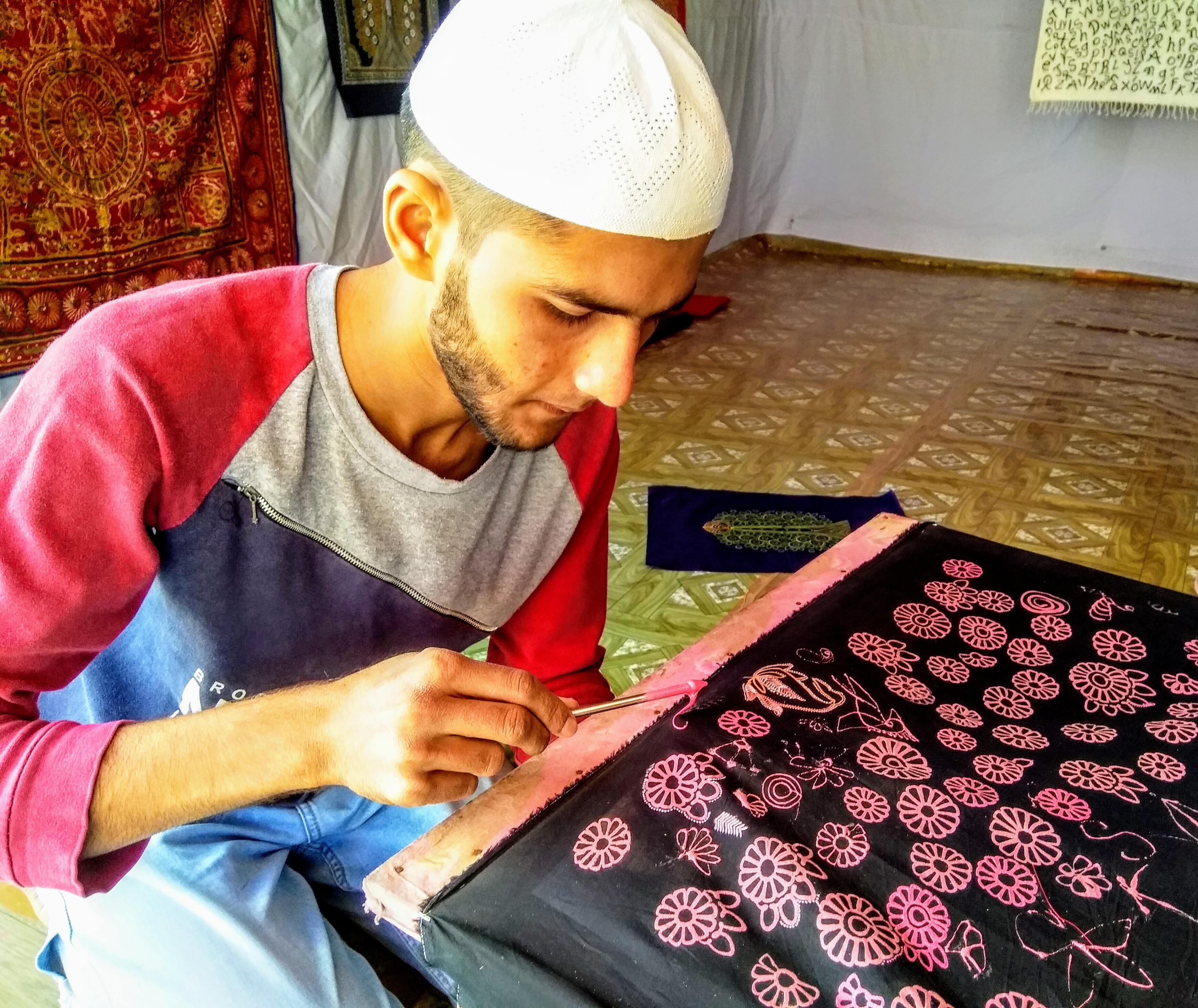
Munaf proudly displays his and his brother’s creations. He displays the first painting made by his forefathers and his painting ,”the earlier paintings were quite simpler as a lot of efforts would go then. We are more skilled now, we have explored intricacies to the design” In an era of dying handicrafts, Munaf and a few others are some who have held on to their family inheritance with pride, dignity and dedication. But what motivates him? “Our work was selected by the Prime Minister as a token of gift for different Embassies. Isn’t it a matter of pride for us?” He proudly shows us the photograph of the painting that his brother had designed. As I scan through the different paintings Munaf explains how the technique is imparted only to the heirs in the family and they are expected to carry on the family legacy. In spontaneous English, Munaf demonstrates, explains and also displays the paintings created.
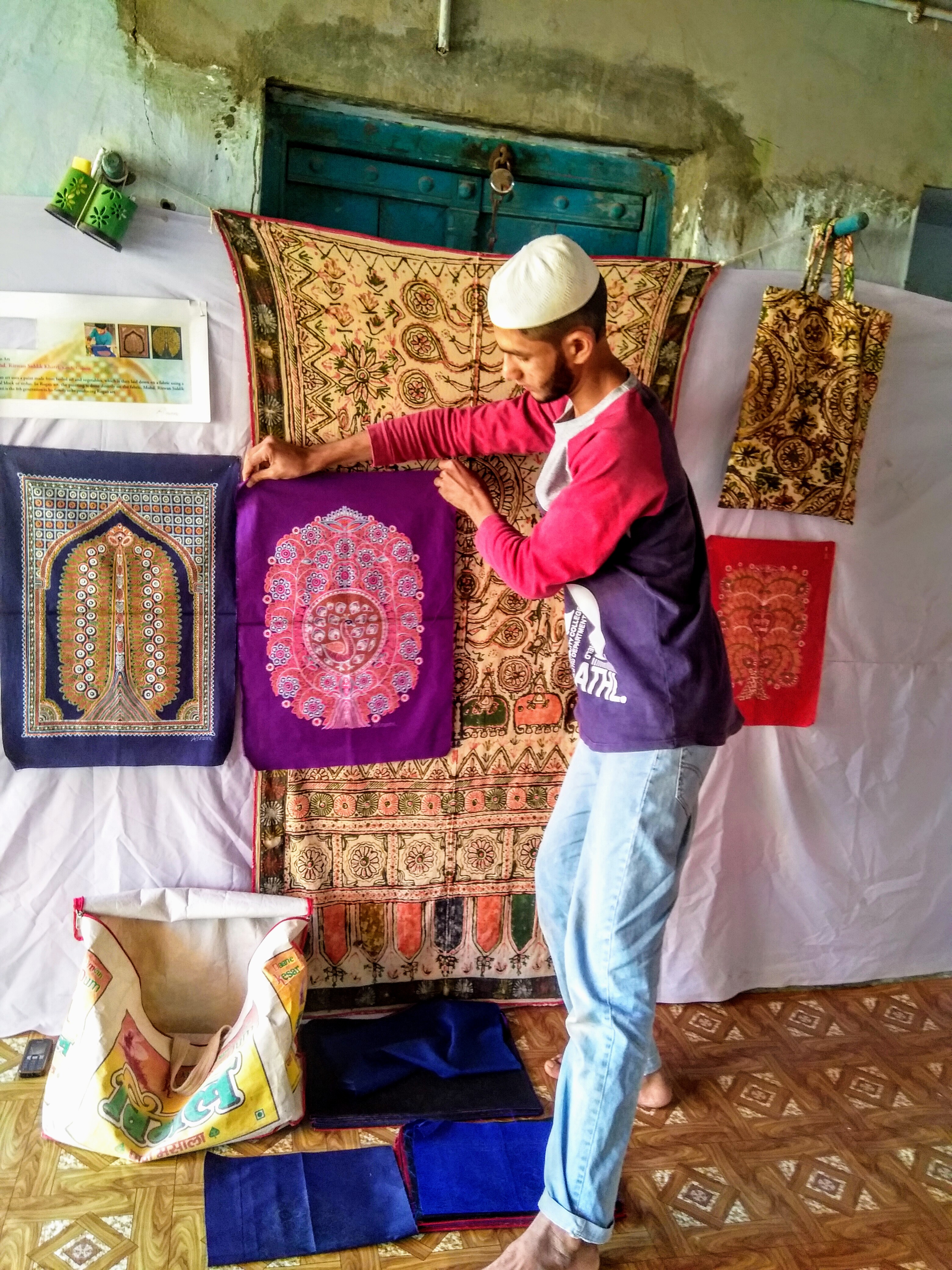
Almost 8 houses down the lane, Munaf recommends me to visit 70 year old Abdullah bhaijaan in the same village. Through an array of bells and chimes fluttering and softly ringing , I pave my way to the shop. A spirited, elderly man scans his audience and bustles through his creation, fumbles around and sits. Mastering in the art of making copper bells, bhaijaan very specifically iterates while demonstrating, “no welding, nothing. The copper bell will be made just like that . Magic!” As he hammers a flat piece of copper into a cylindrical bell while vociferously chewing paan, he demonstrates and explains the process of turning the rusted copper into an antique shine and with a beautiful sound (a skill that is exclusively imparted in his family of copper bell makers).
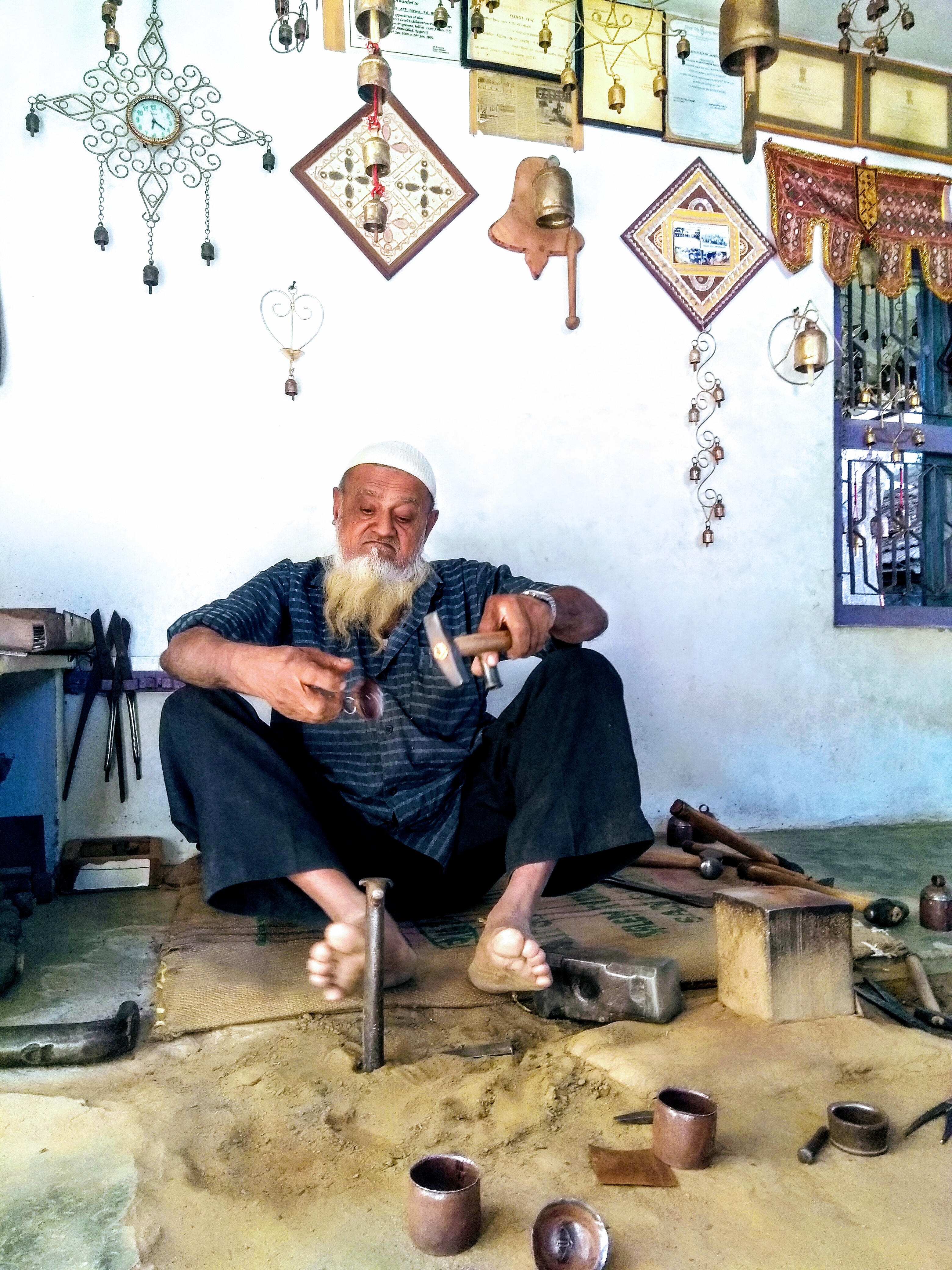
Holding onto this art since he was 12 years old, Abdullah’s entire family – women ,men, grandchildren have a role in the making of the dozens of artistic copper bells chiming all the way in their premises. “People look for perfection but they donot see the beauty of handwork, the rustic in the copper in which beautiful chimes fill the air…” Bhaijan’s son explains.
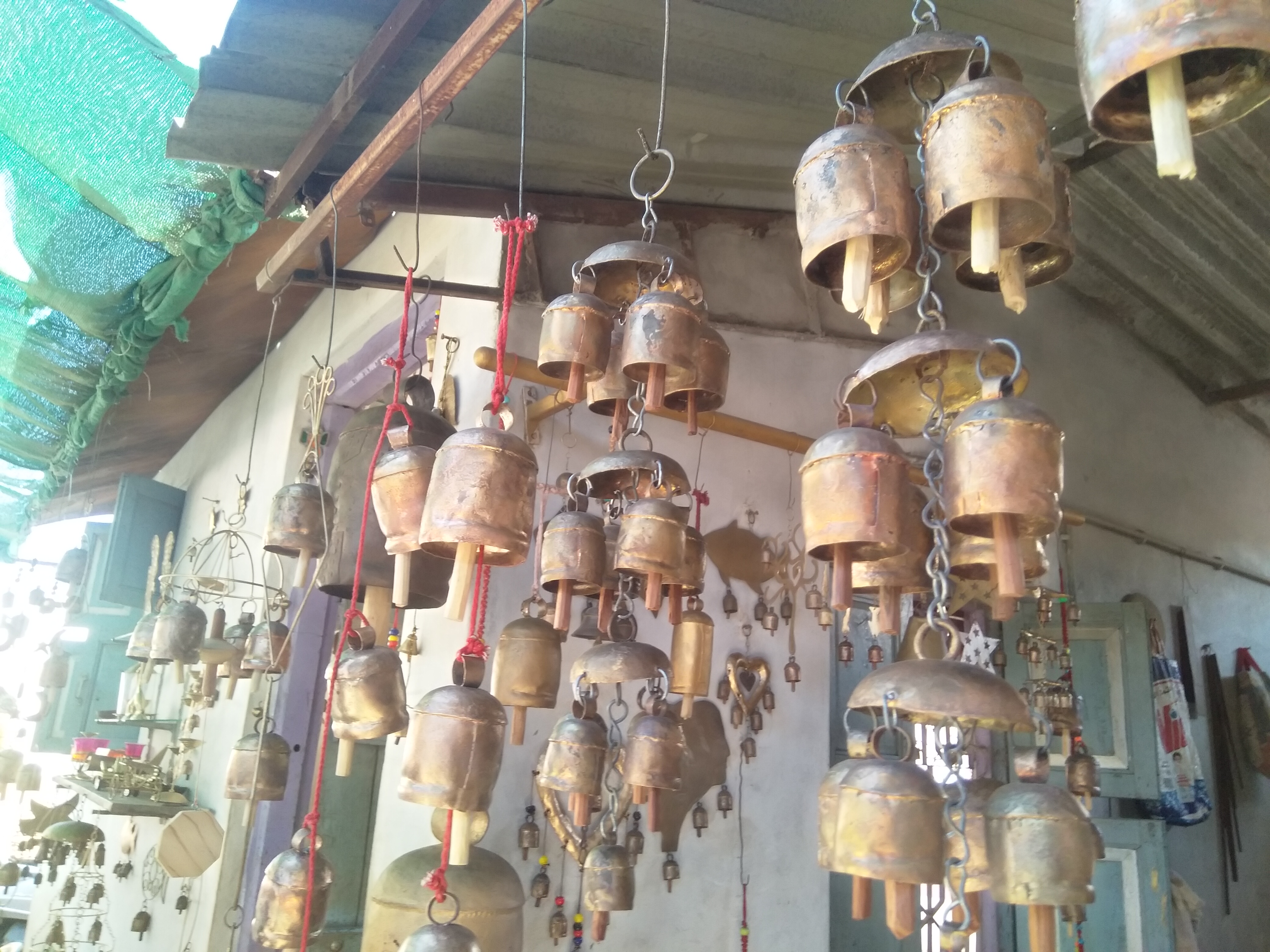
The name of the village ‘Nirona’ comes from ‘Niro-vadh’ meaning a place where one cuts wood. The village is located on a road that cuts off from Bhuj- Rann Highway. Within the cosmos of this little village, where professions are interlinked with family legacies, communities with different socio-religious and family art-works co-exist together, differences in the economic conditions persist.
The Vadhas of Kutch, a predominantly nomadic community, has been living for many generations in the region. An artwork that has passed on within this community is the lacquer lathe work. Different shapes of rolling pins, spoons, forks ladle (made of wood) are placed on the lathe and painted in this unique manual way- rolling the cylindrical part with a string and placing a folded piece of cloth drenched in natural colours and lac made from insect resin to create the designs. Colours are made from pigments of coloured stones and oil. Watching a bare piece of wooden spoon turn into a colourful mosaic is no less than magic!
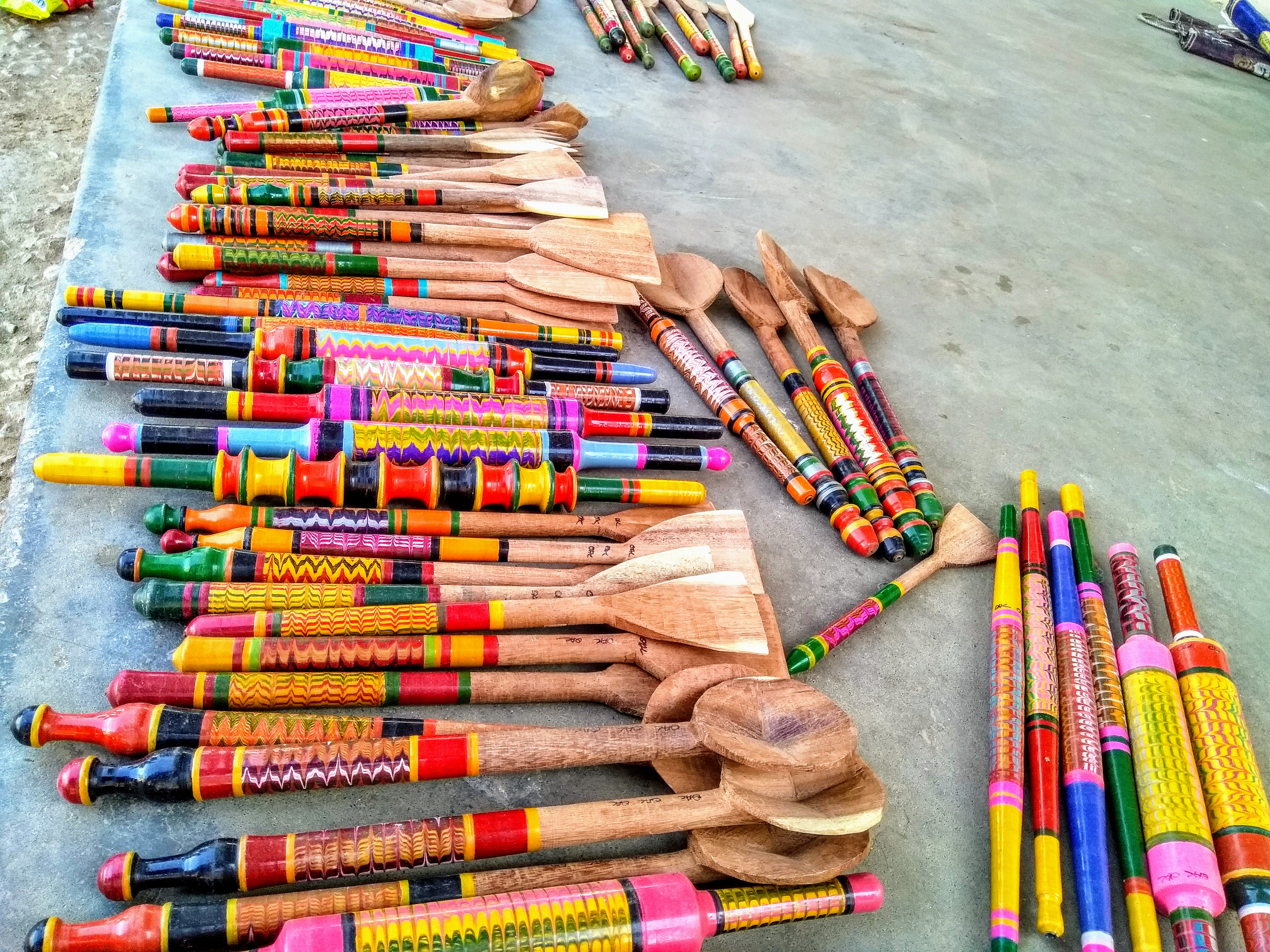
However, behind the many bright colours that flaunt the beauty of this unique craft, the Vadhas continue to be one of the marginalised communities with poor accessibility to facilities and opportunities. Lacquered wood painting remains the primary occupation along with camel rearing in this small close- knit community . Unlike Rogan art that has caught attention of the Government for promotion and subsidy, lacquer art is yet unrecognised , far from market economy. The demand and support for the art form has remained low. Living at the fringes of the village of Nirona, high levels of poverty, deprivation and poor levels of education have hindered the community craftsmen from accessing platforms to promote their art.
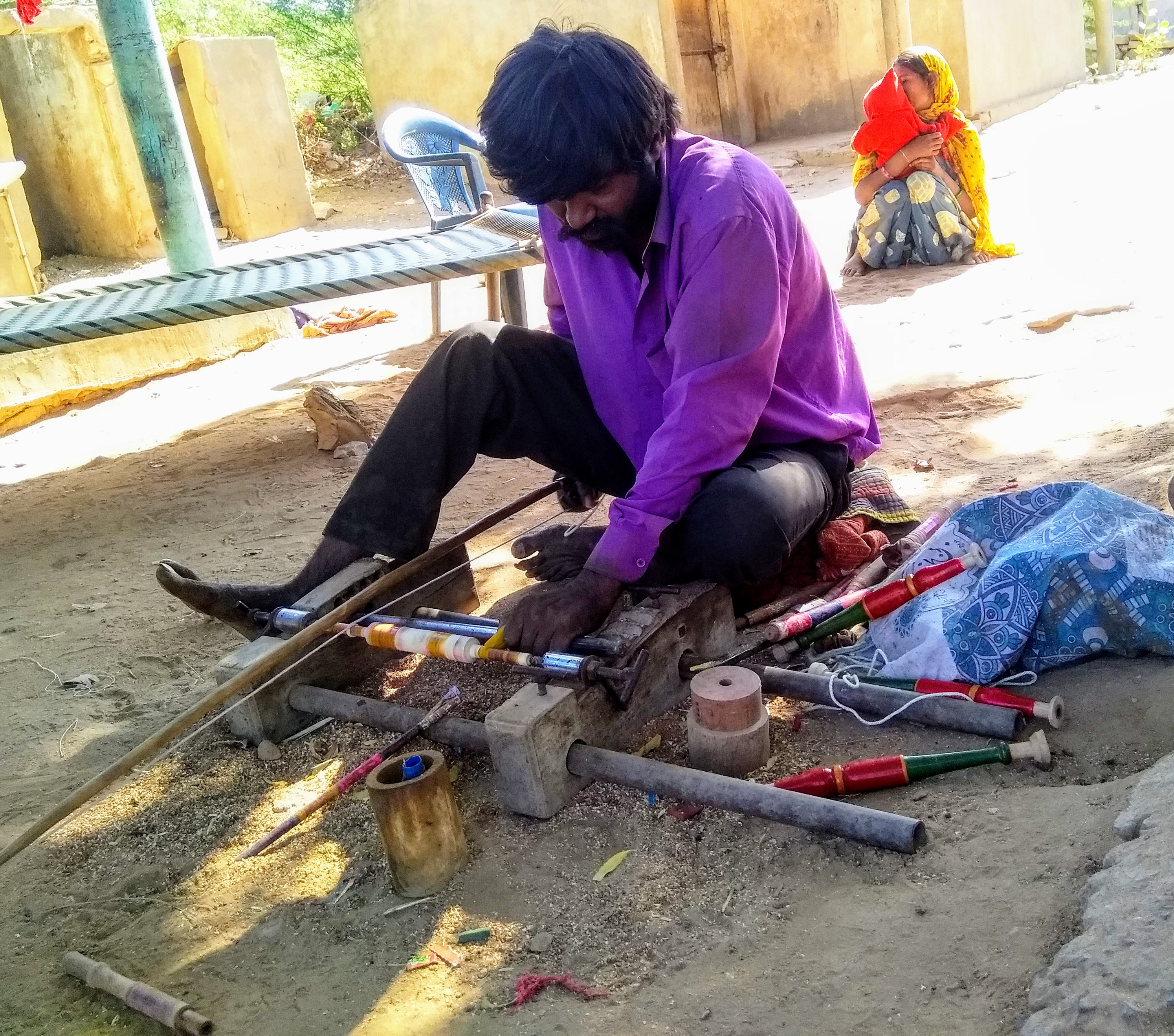
Despite the pain points of a globalised, fast-pacing world where tastes for art and fashion are driven by mass media and technology, younger generations from these remote,rural parts of India are still holding on to traditional art forms with pride. However behind the colours, the chimera and everything beautiful to behold, the reality is stark. While Munaf goes on to share the paintings prices range between Rs 2000 and Rs. 4000 (with different standards set for foreigners), it is less likely to find tourists and customers visiting this part of Gujarat throughout the year. On the other hand, copper bell works and lacquered wood have a lesser demand. A piece of lacquered wood such as rolling pin is priced at Rs 90 to Rs 150 and yet there are few who purchase them.
Gujarat tourism that has sprung to newer heights with active promotion of places like the Rann of Kutchh has enraptured tourists of different age groups and geographies. In the year 2017, close to 2.2 lakhs tourists had visited the Rann Utsav. However very few are aware of villages like Nirona, located away from the popular tourist spots. The local auto driver that I had hired for the day was not aware about Nirona and the art works. “Nobody in my entire life had asked me to drive to Nirona. Please open the map on your phone…“, he shares.
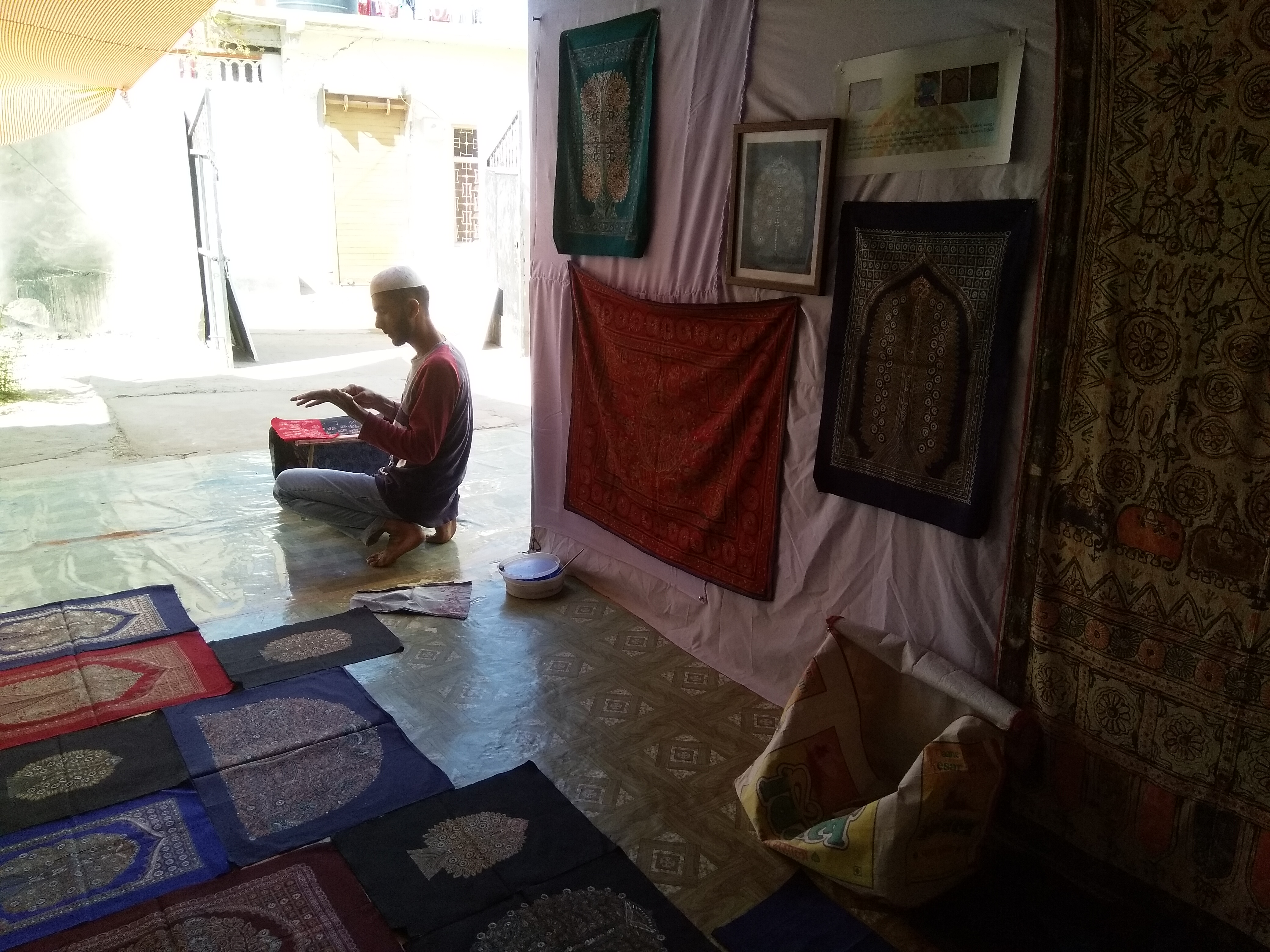
Preserving this rich heritage of art forms is necessary as it is a slice of history that has been passed on as much as ancient relics. The question of course lies ‘How?’ But before that giving these artists their due recognition , a space to present their art, promoting their work remain the first task at hand. The enthusiasm with which Munaf shows me his painting- ‘ the tree of life’ a symmetrically designed rogan painting and the inherent meaning it carries and he goes on to describe -“tree of life – if you closely observe this is how each life begins and branches out , forges relationships, fosters love and harmony , forms new branches and stretches out one’s potential”, I look at him amazed. As I closely trace the patchwork drawn with admiration of his craftsmanship and the poetic essence he has infused to it, I am caught by the next words , “Please purchase it Ma’am. I can show you more. But do give it a thought, people would love to see this painting. It is unique and go with the walls of your house. I can frame it.” I sense the despair that treads underneath.
By Manisha Dutta

